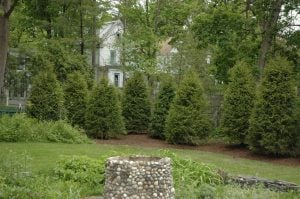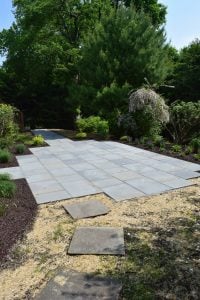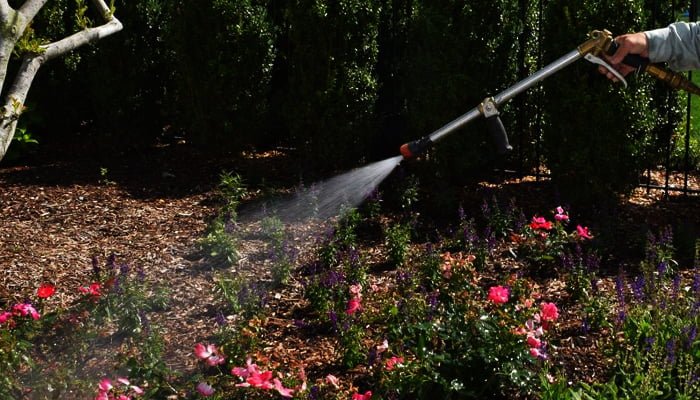The simple answer to the question What is the best time of year to plant trees? is during the in-between seasons; when the weather is not too hot, but not too cold either. This is the time that plants and landscaping thrive. We know that the last thing you want is to spend time and money on a landscape project and end up with brown, wilted foliage.
It is not uncommon for homeowners to get the “planting and gardening bug” on the first nice day of spring, but this may not be the best time to begin your landscaping project. In the very early spring, the weather is often unpredictable. We may experience heavy rainfall, early spring drought, extreme cold (especially at night), or even a late snow storm. These unpredictable and rollercoaster-like weather patterns can create unnecessary and damaging stress to your new plants.
While the first days of spring may not be the best time to plant your new landscaping, extreme heat isn’t a good time either. You want to make sure that your plants/trees have enough time to establish roots before they are exposed to the stress of high heat, and potentially drought. Because of this, the window of opportunity to plant trees in spring is relatively short. However, this small window in spring is the best time of year to plant trees and shrubs. Often times fall is too late because new trees and young roots may not be able to survive the freezing temperatures.
Here are some types of trees that are best suited for spring planting:
- Bar Root Trees – These are dug from the ground when they are dormant and stored in a moist medium and shipped bare of soil. Planting these trees in spring is best so that their naked roots won’t suffer from winter damages.
 Evergreens – These should be planted either early fall or late spring. They should not be planted during times of extreme heat.
Evergreens – These should be planted either early fall or late spring. They should not be planted during times of extreme heat.- Conifers – These trees are very susceptible to cold weather and their needles tend to lose moisture in winter. Because of this, spring is the best time to plant them.
- Transplants – Spring is the best time to transplant a tree after the ground has warmed, but before the tree sets buds. Fall is also a viable option; typically, after leaves have fallen, but before the ground freezes.
In addition to choosing the best time of year to plant, you’ll also need to consider your property and ground conditions, as well as facts about the types of plants/trees you are planning to install. Some conditions to consider are:
- The amount of sun/shade in a given area where you plan to plant
- When does this area get sun?
- Is there no sun on this area at all throughout the day?
- Does it get sun all day long every day?
- What is the condition of the soil?
- How good/bad is the drainage, particularly during rain?
- How large will the mature tree be?
- How close are you planning to plant it to your home? Does the expected mature size and this proximity make sense?
- Is the species native to your area?
- How close will trees be to each other?
- What will your maintenance/care plan be?

The most important aspects of creating a thriving and healthy landscape are, first making sure your plants/trees are installed properly, and secondly making sure that you understand how to properly water them. Although this may sound easy enough, these are two of the most popular reasons for a landscape dying within a few months of being planted.
Our trained and certified landscape design build professionals at Red Cedar can not only help you to plan a beautiful landscape design that increases your home’s curb appeal, but we can also ensure that your project is done correctly, at the right time of year, and in the best area/conditions to thrive. We can also help you to understand the best maintenance plan, as well as, provide you with a professional plant health care plan. Contact us today for your free consultation!


